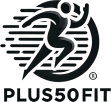I’m a tech-head.
I train with Alpha & Beta binaural beats.
I fine-tune cadence using DrumBuddy loops.
I wear a chest strap and drill down into metrics like rTSS, Pa:HR, and IF.
But sometimes I run, feel amazing-and my watch says I shouldn’t.

The Metrics Paradox
Trusting your body vs smart devices is one of the most important challenges runners face today. We live in a time when every heartbeat, every step, every calorie burned can be tracked, stored, and compared. For runners over 50, tech can feel like a revelation. It promises progress, optimization, and precision. But somewhere along the way, many of us started trusting the readout more than the reality.
Today’s question is simple but profound: When did I start trusting my smart devices more than my own body?
The Rise of Smart Devices-and the Fall of Self-Trust
It started with heart rate monitors in the 1970s, GPS watches in the 2000s, and now wearable tech that tracks everything from blood oxygen to cadence symmetry. The Quantified Self movement turned our workouts into data dashboards. At first, these tools helped.
But now?
For many of us, it’s no longer about support-it’s about substitution.
We’ve begun outsourcing our intuition. Did we really sleep well? Let’s check the app. Did that run feel easy? Let’s see what Zone we were in. And if the numbers say otherwise, we believe the numbers.
“It started with curiosity. It became dependency.”
Why RPE Still Matters (Even More Than You Think)
The Rate of Perceived Exertion (RPE) scale, developed by Gunnar Borg, remains one of the most reliable tools in endurance sport. Why? Because your body knows when it’s working hard-even if your device doesn’t.
Studies have shown that RPE aligns closely with lactate threshold, VO2 max zones, and even fatigue profiles. But it takes time to calibrate. It’s not a number your Garmin gives you-it’s something you grow into.
During my July 9 Easy Run, my HR read 65 bpm early on-while I was already sweating. That error skewed my Pa:HR. But I didn’t need a chart to know I was in Zone 2. I felt it.
📖 Training Log – July 9, 2025 Easy Run
Why We Trust Devices More Than Ourselves
- Objective data feels safer than subjective experience.
- We’re conditioned to believe that if it’s measurable, it must be true.
- Apps reward us with digital confetti: badges, rings, kudos.
But those dopamine loops don’t help us tune into breath, cadence, or muscle tension. They teach us to comply, not to feel.
The Cost of Outsourcing Intuition
When we stop listening to our bodies:
- We override early signs of injury
- We ignore fatigue masked by adrenaline
- We lose the ability to pace by feel
Worse, we miss the joy-the inner stillness that can only come from movement without metrics.
On July 9, I tried to run easy. My body said yes. My watch said no.
The Way Back: Rebuilding Trust With Ourselves
Relearning to feel isn’t about ditching tech-it’s about reclaiming our role as primary interpreter.
Try this:
- Run without checking your watch until after the cooldown
- Journal RPE immediately post-run before syncing to Garmin or Strava
- Practice “silent runs” with no audio, no feedback
- Use mantras to anchor you in the present (“Breathing easy” is my go-to)
We can be tech-supported, but body-led.
“I didn’t just execute my Easy Run-I composed it. It wasn’t brute effort. It was intentional, artful, and completely mine.”
Final Thought
Trust your watch.
But trust your body more.
Because someday-on race day, in the wind, under pressure-your body will make the call. Not your device.
And you want to be ready to listen.

Absolutely true. I just started running 8 weeks ago and started geeking out on data and gadgets. In the past few weeks I’ve started to realize that sometimes the two don’t mesh. I still look at the data for trends, but listen to my body more.
[…] 📥 Trusting Your Body vs Smart Devices […]
[…] 🌡️ Smart Devices, Dumb Trust? […]